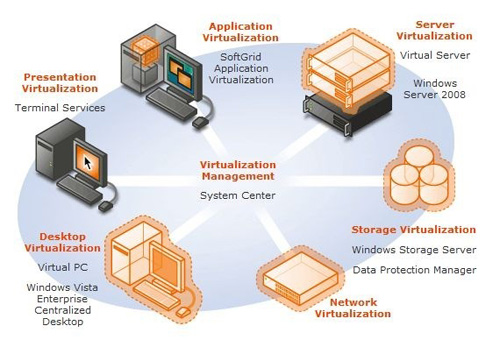Regardless of the complexity of a company’s IT system, virtualization enables a number of advantages. The biggest advantage is the process of the system consolidation and controlled growth in the number of servers in an information system. Server consolidation results in substantial progress in this segment of the system. Quality consolidation increases utilization of available resources over 50%. When applied in actual systems, virtualization reduces the real number of servers required in the system for at least 3 times. Virtualization in the information system results in:
- Reduced power consumption
- Fewer servers
- Reduction of the air-conditioning system capacity
- Reduction of the accompanying peripherals
- Reduced complexity and size of the network infrastructure due to the reduced number of required network connections through which the server creates a connection with the rest of the system
- Reduced hardware maintenance costs due to fewer number of components which can break down
- Reduced system administration costs due to fewer system administrators, or vice versa – increase in the productivity of system administrators that cover up to 5 times more active virtual servers than real ones.



